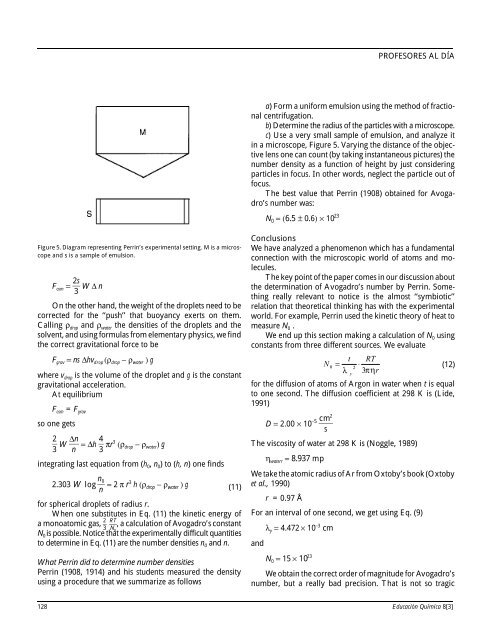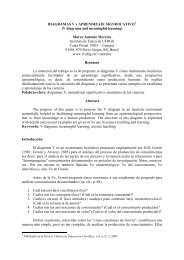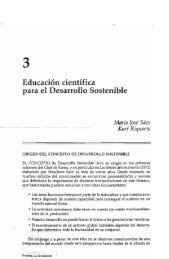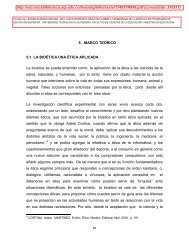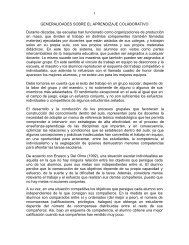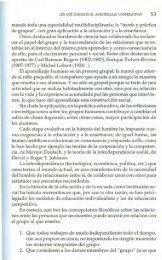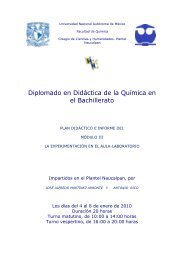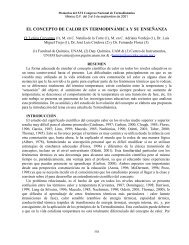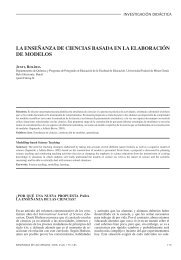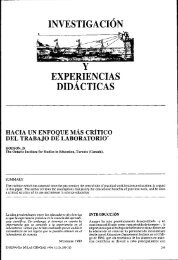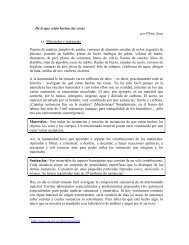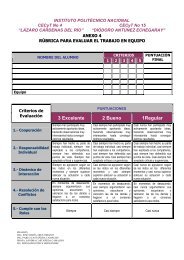Educación Química, vol. 08, núm. 3 - Coordinación de Actualización ...
Educación Química, vol. 08, núm. 3 - Coordinación de Actualización ...
Educación Química, vol. 08, núm. 3 - Coordinación de Actualización ...
You also want an ePaper? Increase the reach of your titles
YUMPU automatically turns print PDFs into web optimized ePapers that Google loves.
PROFESORES AL DÍA<br />
a) Form a uniform emulsion using the method of fractional<br />
centrifugation.<br />
b) Determine the radius of the particles with a microscope.<br />
c) Use a very small sample of emulsion, and analyze it<br />
in a microscope, Figure 5. Varying the distance of the objective<br />
lens one can count (by taking instantaneous pictures) the<br />
number <strong>de</strong>nsity as a function of height by just consi<strong>de</strong>ring<br />
particles in focus. In other words, neglect the particle out of<br />
focus.<br />
The best value that Perrin (19<strong>08</strong>) obtained for Avogadro’s<br />
number was:<br />
N 0 = (6.5 ± 0.6) × 10 23<br />
Figure 5. Diagram representing Perrin’s experimental setting. M is a microscope<br />
and s is a sample of emulsion.<br />
F osm = 2s<br />
3 W ∆ n<br />
On the other hand, the weight of the droplets need to be<br />
corrected for the ‘‘push’’ that buoyancy exerts on them.<br />
Calling ρ drop and ρ water the <strong>de</strong>nsities of the droplets and the<br />
solvent, and using formulas from elementary physics, we find<br />
the correct gravitational force to be<br />
F grav = ns ∆hv drop (ρ drop − ρ water ) g<br />
where v drop is the <strong>vol</strong>ume of the droplet and g is the constant<br />
gravitational acceleration.<br />
At equilibrium<br />
F osm = F grav<br />
so one gets<br />
2<br />
3 W ∆n<br />
n = ∆h 4 3 πr3 (ρ drop − ρ water ) g<br />
integrating last equation from (h 0 , n 0 ) to (h, n) one finds<br />
2.303 W log n 0<br />
n = 2 π r3 h (ρ drop − ρ water ) g (11)<br />
for spherical droplets of radius r.<br />
When one substitutes in Eq. (11) the kinetic energy of<br />
a monoatomic gas, 2 RT<br />
, a calculation of Avogadro’s constant<br />
3 N 0<br />
N 0 is possible. Notice that the experimentally difficult quantities<br />
to <strong>de</strong>termine in Eq. (11) are the number <strong>de</strong>nsities n 0 and n.<br />
What Perrin did to <strong>de</strong>termine number <strong>de</strong>nsities<br />
Perrin (19<strong>08</strong>, 1914) and his stu<strong>de</strong>nts measured the <strong>de</strong>nsity<br />
using a procedure that we summarize as follows<br />
Conclusions<br />
We have analyzed a phenomenon which has a fundamental<br />
connection with the microscopic world of atoms and molecules.<br />
The key point of the paper comes in our discussion about<br />
the <strong>de</strong>termination of Avogadro’s number by Perrin. Something<br />
really relevant to notice is the almost ‘‘symbiotic’’<br />
relation that theoretical thinking has with the experimental<br />
world. For example, Perrin used the kinetic theory of heat to<br />
measure N 0 .<br />
We end up this section making a calculation of N 0 using<br />
constants from three different sources. We evaluate<br />
(12)<br />
for the diffusion of atoms of Argon in water when t is equal<br />
to one second. The diffusion coefficient at 298 K is (Li<strong>de</strong>,<br />
1991)<br />
−5<br />
cm2<br />
D = 2.00 × 10<br />
s<br />
The viscosity of water at 298 K is (Noggle, 1989)<br />
η waterr = 8.937 mp<br />
We take the atomic radius of Ar from Oxtoby’s book (Oxtoby<br />
et al., 1990)<br />
r = 0.97 Å<br />
For an interval of one second, we get using Eq. (9)<br />
and<br />
λ y = 4.472 × 10 −3 cm<br />
N 0 = 15 × 10 23<br />
N<br />
t RT<br />
= ⋅<br />
λ 3πη<br />
r<br />
0 2<br />
y<br />
We obtain the correct or<strong>de</strong>r of magnitu<strong>de</strong> for Avogadro’s<br />
number, but a really bad precision. That is not so tragic<br />
128 <strong>Educación</strong> <strong>Química</strong> 8[3]


